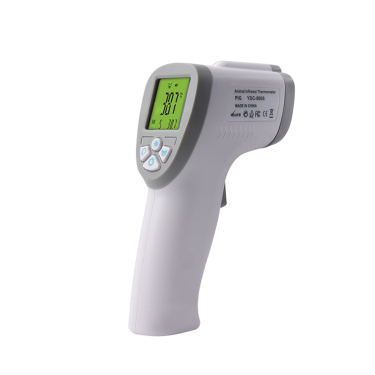
# Dog Thermometer Guide: How to Check Your Pet’s Temperature Safely
## Introduction
Monitoring your dog’s temperature is an essential part of pet care, especially when they show signs of illness. A dog thermometer is a must-have tool for every responsible pet owner. This guide will walk you through the safe and effective ways to check your dog’s temperature at home.
## Why Monitoring Your Dog’s Temperature Matters
A dog’s normal body temperature ranges between 101°F to 102.5°F (38.3°C to 39.2°C). Temperatures outside this range could indicate:
– Fever (above 103°F/39.4°C)
– Hypothermia (below 99°F/37.2°C)
– Potential infections or other health issues
Regular temperature checks can help you detect health problems early and seek veterinary care when needed.
## Choosing the Right Dog Thermometer
There are several types of thermometers suitable for dogs:
### Digital Rectal Thermometers
The most accurate option for dogs. Look for models with flexible tips and quick readings.
### Ear Thermometers
Less invasive but may be slightly less accurate. Best for dogs who resist rectal temperature checks.
### Infrared Thermometers
Non-contact options that measure surface temperature, but aren’t as reliable for core body temperature.
## Step-by-Step Guide to Taking Your Dog’s Temperature
### Preparation
1. Gather your supplies: thermometer, lubricant (petroleum jelly or water-based), treats, and a helper if needed.
2. Calm your dog with gentle petting and reassurance.
Keyword: dog thermometer
### Rectal Method (Most Accurate)
1. Lubricate the thermometer tip.
2. Lift your dog’s tail gently.
3. Insert the thermometer about 1 inch into the rectum.
4. Hold it steady until it beeps (usually 10-60 seconds).
5. Remove and read the temperature.
6. Clean the thermometer thoroughly after use.
### Ear Method
1. Gently pull the ear flap upward to straighten the ear canal.
2. Insert the thermometer probe into the ear canal.
3. Hold until the reading is complete.
4. Reward your dog with a treat.
## Safety Tips and Precautions
– Never use a glass mercury thermometer (risk of breakage)
– Don’t force the thermometer if your dog resists strongly
– Watch for signs of discomfort or pain
– Clean the thermometer before and after each use
– Consider your dog’s stress levels – postpone if they’re overly anxious
## When to Call the Vet
Contact your veterinarian immediately if:
– Temperature is above 103°F (39.4°C) or below 99°F (37.2°C)
– Your dog shows other symptoms like lethargy, vomiting, or loss of appetite
– You notice blood or other abnormalities during temperature taking
## Conclusion
Regular temperature checks with a proper dog thermometer can help you monitor your pet’s health effectively. While the process might seem daunting at first, with patience and practice, both you and your dog will become more comfortable with it. Always consult your veterinarian if you have concerns about your dog’s temperature or overall health.